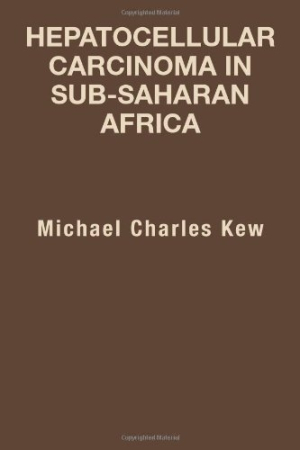Hepatocellular Carcinoma In Sub-Saharan Africa
Hepatocellular Carcinoma in Sub-Saharan Africa by Michael Charles Kew looks at the complex environment that allows liver cancer (hepatocellular carcinoma) to thrive unlike anywhere else in the world. Kew’s presentation is very orderly, working from the epidemiology of the disease to diagnosis, then treatment and prevention.
Kew is a physician practicing in South Africa and an expert in the field of liver disease. His extensive practical knowledge and research shines through in his delivery of the subject matter. In addition to Kew’s own credentials, the book is bolstered by more than seventy-five pages of references.
The author examines the cultural, geographical, nutritional, and pathological factors that make liver cancer more prevalent and deadly in this part of Africa. While he clearly traces causes, effects, and remedies, his scholarly tone, coupled with his experience as a caregiver, conveys a compassionate, nonjudgmental attitude. He’s in a unique and powerful position to write without the condescension and imperialism that often occurs when people write about issues in Africa.
Written in passive voice, Kew’s writing is clear and academic. His style is consistent with other works of medical literature. Those interested in the subject will find it informative and well-founded while to the casual reader it may seem too wordy and technical.
Many black and white photos of tumors, x-rays, ultrasonograms, and more have been included. They add information, explanation, and gravity to the text and are large enough to be easy to see. The graphs and tables—such as a graph comparing the weights of cancerous livers in Southern Africa and Japan, and a table showing incidence rates by age and sex in individual African countries—are impressive and useful.
The book closes with a forward-thinking chapter about what can be done to improve prevention, early detection, and treatment of liver cancer in the region. It’s an effective summation and closing, but the language of the title of the chapter is confusing (at least for American readers): “Wither Hepatocellular Carcinoma in Sub-Saharan Africa?”
The flat, brown cover is very textbook-like and fits the seriousness of the content. The title, too, has an academic, no-nonsense approach.
Invested readers will find valuable, compelling, and life-saving information within the pages of Hepatocellular Carcinoma In Sub-Saharan Africa. It is an ideal book for physicians and medical students around the world, as well as nonprofit workers and others who have a vested interest in sub-Saharan Africa.
Reviewed by
Melissa Wuske
Disclosure: This article is not an endorsement, but a review. The publisher of this book provided free copies of the book and paid a small fee to have their book reviewed by a professional reviewer. Foreword Reviews and Clarion Reviews make no guarantee that the publisher will receive a positive review. Foreword Magazine, Inc. is disclosing this in accordance with the Federal Trade Commission’s 16 CFR, Part 255.

